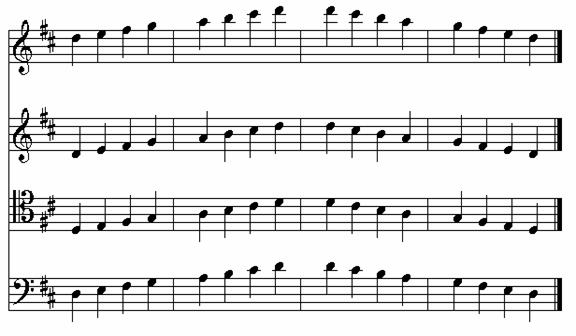Section 1: Introduction
In the first few chapters, you learned about two of the three clefs used when composing a score. They were the Treble and Bass clefs. You learned that the Treble clef is higher in pitch than the Bass clef; you learned the relative positions of each clef on a score, and the purpose that they serve for the creation of harmony and melody.
In the next few sections we are going to take a much closer look at the Treble and Bass clefs and we will introduce the third major clef for sheet music, the Tenor clef. But first, here is a look at what will soon become a regular sight to many of you.

Figure A (The Grand Staff)
Look closely at Figure A. What do you see? Notice the placement of the clefs on each staff. Notice the bar lines that separate each measure. Do you also notice the positions of the clefs and the order they appear in. Can you tell what key it is in by looking at the accidentals at the beginning of each staff?
This is a grand staff. If you said it was the D major scale you would have been correct. In the next few sections, we are going to take a look at each of the clefs and define what makes each of them unique. When you are ready, proceed to the next section and we will begin by taking a closer look at the Treble clef.